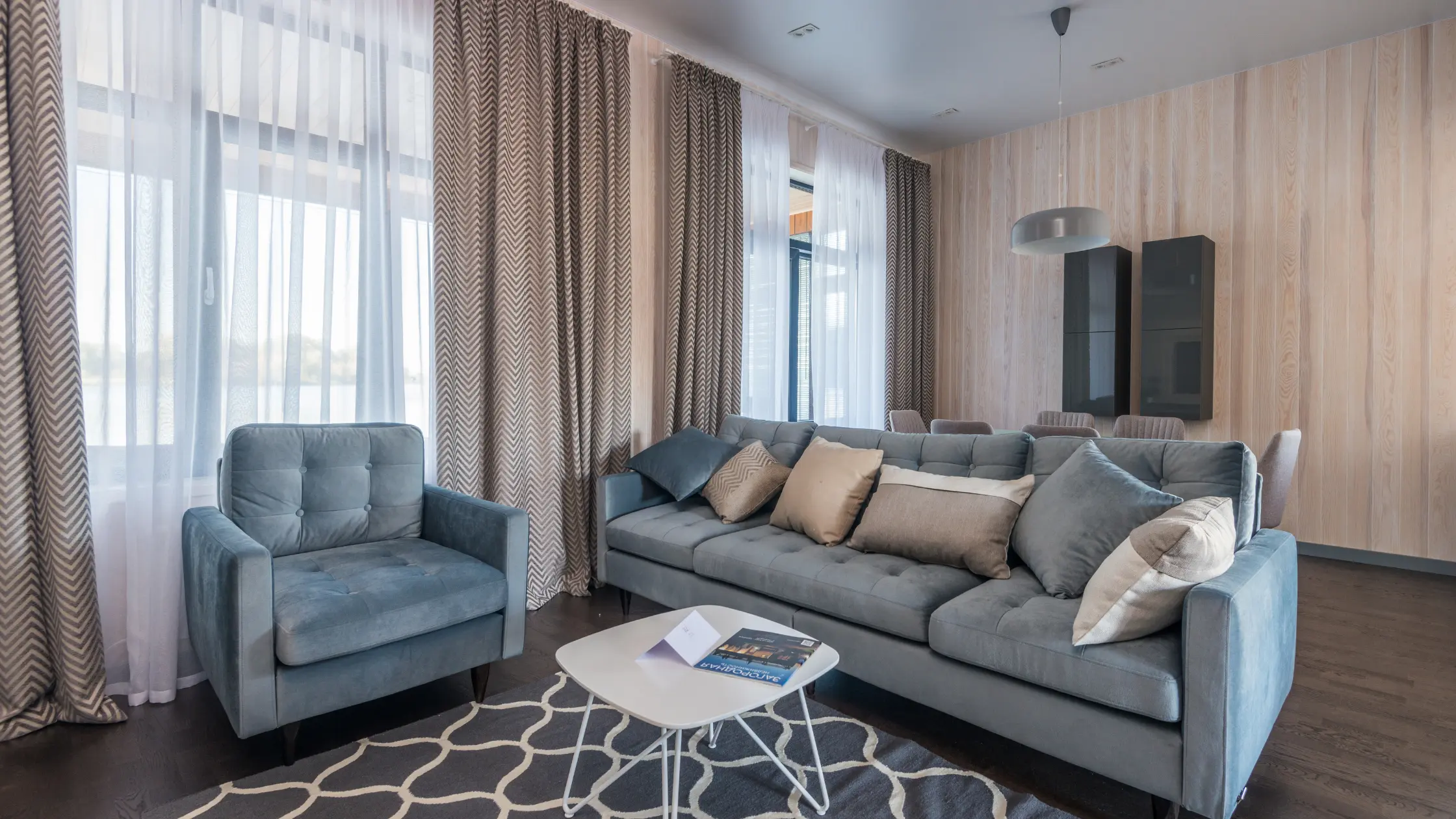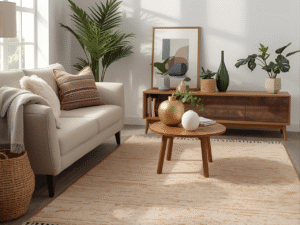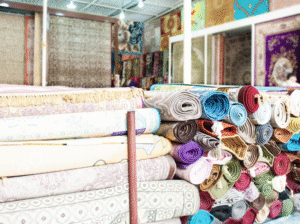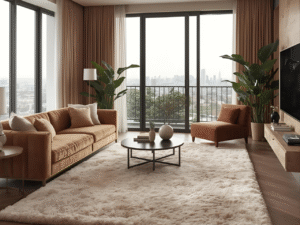Selecting the right rug color for your furniture can elevate your living room from ordinary to extraordinary. Rugs do more than just cover floors; they add texture, warmth, and a splash of personality to any room. The right rug color can harmonize your decor, creating a cohesive look that speaks to your style and taste. In this blog, we’ll explore how to choose the perfect rug color to complement your furniture, ensuring your space looks stylish and inviting.
Understanding the Basics
Before diving into specific color choices, it’s essential to understand a few fundamental principles of color theory and interior design.
Color Wheel Basics
The color wheel divides colors into primary (red, blue, yellow), secondary (green, orange, purple), and tertiary colors (combinations of primary and secondary colors). Understanding the relationships between these colors can help you make informed decisions when choosing rug colors.
Color Schemes
- Monochromatic: This scheme involves different shades and tints of a single color, creating a harmonious and soothing look.
- Analogous: These are colors next to each other on the color wheel, offering a subtle and serene appearance.
- Complementary: Colors opposite each other on the wheel create a vibrant and high-contrast look.
- Triadic: This scheme uses three evenly spaced colors on the wheel, providing a balanced and dynamic look.
Matching Rug Colors to Furniture
Now that you have a grasp of color theory, let’s discuss how to match rug colors to your furniture effectively.
Neutral Furniture
Neutral furniture, such as pieces in shades of white, beige, gray, or black, offers a versatile base for various rug colors.
- Bold and Vibrant Rugs: With neutral furniture, you can experiment with bold colors like red, blue, or green. These rugs add a pop of color and make a statement without overwhelming the space.
- Patterned Rugs: Patterns can add interest and depth. Consider geometric, floral, or abstract designs in colors that complement your existing decor.
- Neutral Rugs: For a more minimalist approach, opt for rugs in neutral tones. Different textures and materials, like jute or sisal, can add visual interest without introducing new colors.
Colorful Furniture
When you have colorful furniture, selecting a rug that complements rather than competes with your pieces is crucial.
- Harmonizing Colors: Choose a rug in a color that echoes one of the hues in your furniture. This creates a cohesive look and ties the room together.
- Contrasting Colors: For a bolder look, select a rug in a contrasting color. For example, if your furniture is blue, a rug in a warm color like orange can create a striking contrast.
- Muted and Neutral Rugs: To avoid visual overload, consider rugs in neutral tones that won’t compete with your colorful furniture.
Patterned Furniture
Patterned furniture can be tricky to pair with rugs, but with the right approach, you can achieve a balanced and stylish look.
- Solid-Colored Rugs: When your furniture features bold patterns, solid-colored rugs can provide a calming counterbalance. Choose a color that complements one of the shades in the pattern.
- Subtle Patterns: If you love patterns, opt for rugs with subtle designs. Tone-on-tone patterns or small-scale prints can add texture without overwhelming the space.
- Monochromatic Scheme: For a cohesive look, choose a rug in the same color family as your furniture pattern. This approach creates a unified and sophisticated appearance.
Considering Room Size and Lighting
The size and lighting of your room play significant roles in how colors appear and interact.
Room Size
- Small Rooms: In smaller spaces, lighter rug colors can make the room feel larger and more open. Avoid overly dark or bold patterns that can make the space feel cramped.
- Large Rooms: Larger rooms can handle darker and more vibrant rugs. Bold patterns and colors can anchor the space and create defined areas within the room.
Lighting
- Natural Light: Rooms with plenty of natural light can handle darker rug colors without feeling too heavy. Light-colored rugs will enhance the brightness and airiness of the space.
- Artificial Light: In rooms with limited natural light, opt for lighter rugs to reflect available light and make the space feel more inviting. Warm-toned rugs can add coziness to artificially lit spaces.
Practical Considerations
While aesthetics are crucial, practical aspects should also influence your rug choice.
Maintenance
- Stain Resistance: If you have kids or pets, consider rugs in colors that hide stains and wear well. Darker colors and patterned rugs are often more forgiving.
- Durability: High-traffic areas require durable rugs that can withstand wear and tear. Consider materials like wool or synthetic fibers for long-lasting use.
Comfort
- Material: The rug material affects both comfort and appearance. Wool rugs are soft and durable, while synthetic fibers can be more affordable and easier to clean.
- Pile Height: Low-pile rugs are easier to clean and more durable, while high-pile rugs offer luxurious comfort underfoot.
Seasonal Changes
Consider changing your rugs with the seasons to keep your space feeling fresh and updated.
- Warm Seasons: During spring and summer, lighter and brighter rugs can enhance the airy feel of your home.
- Cool Seasons: In fall and winter, darker and richer colors can add warmth and coziness.
Personal Style and Preferences
Ultimately, your rug choice should reflect your personal style and preferences.
Eclectic Style
- Mix and Match: Don’t be afraid to mix different styles, colors, and patterns. An eclectic look allows for creativity and personal expression.
- Bohemian Vibes: Embrace bold colors, intricate patterns, and a mix of textures to create a bohemian-inspired space.
Modern Style
- Clean Lines: Opt for rugs with clean lines and minimal patterns. Neutral colors and geometric designs work well in modern spaces.
- Monochrome Palette: A monochrome color palette with varying shades of the same color can create a sleek and contemporary look.
Traditional Style
- Classic Patterns: Traditional spaces benefit from classic rug patterns like oriental, floral, or Persian designs.
- Rich Colors: Deep, rich colors like burgundy, navy, and emerald add elegance and sophistication to traditional interiors.
Final Thoughts
Choosing the perfect rug color for your furniture involves a blend of color theory, practical considerations, and personal style. By understanding the relationship between your furniture and potential rug choices, you can create a harmonious and stylish space that reflects your taste and enhances your home’s ambiance. Whether you prefer bold and vibrant contrasts or subtle and soothing harmonies, the right rug can transform your room, making it both beautiful and inviting.
Remember, the perfect rug color is one that makes you feel at home. Trust your instincts, experiment with different options, and enjoy the process of creating a space that is uniquely yours.





